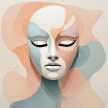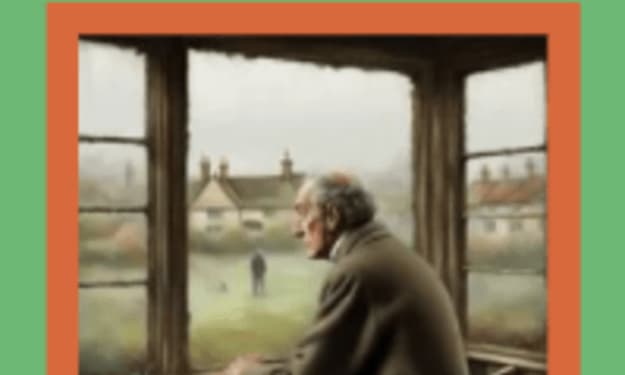Occult and Magick in the Avant-Garde: From Ancient Myths to Modern Art
The Occult in Avant-Garde Music, Art and Literature

The terms “occult” and “magick” encompass various esoteric traditions, mystical practices, and fringe beliefs that have fascinated people for centuries.
Ever since the avant-garde first coalesced as a radically experimental artistic movement, its mavericks and trailblazers have hungrily embraced the occult and the practices of magick.
Ancient Myths and Supernatural Legends
Many ancient mythologies are steeped in supernatural and occult themes that provided fertile ground for the avant-garde. The medieval Welsh tales of The Mabinogion, with their magical elements and mythic heroes, resonated with the 19th and 20th century revival of interest in the occult. Other influential ancient mythological sources included Greek and Roman mystery cults, as well as pagan Norse and Germanic traditions with their rich supernatural cosmologies.
Victorian & Early 20th Century Esoteric Studies
The Victorian period through the 1930s saw an explosive mainstream fascination with the occult and supernatural. The spiritualist movement, including intellectual societies like The Ghost Club and the Society for Psychical Research, avidly investigated seances and attempts to communicate with the dead. The tarot’s esoteric symbolism piqued interest, while spirit boards like the Ouija promised contact between the living and the grave.
Occult groups proliferated, from the notorious Hermetic Order of the Golden Dawn, to more eclectic Anglo-Saxon pagan revivalists like the Roerich Society and The Order of Woodcraft Chivalry. Publications catered to the morbid Victorian obsession with death, from reprints of lurid medieval necromancy tales to sensationalised tomes on famous morticians. The darker esoteric arts of ceremonial magic expounded in Aleister Crowley’s writings found an avant-garde readership enthralled by the transgressive.
Occult/Magick in Music
The potent cultural undercurrents of occultism and magick cast a hypnotic spell over the avant-garde rock and experimental music scenes from the 1950s through the 1970s. The decade’s postwar demimonde of disaffected youth and the burgeoning counterculture embraced these fringe esoteric realms as part of a broader rejection of the prevailing social order’s staid conventions and conformity.
Rock’s flirtations with occult figures like Aleister Crowley became overt callouts by the late 1960s. Led Zeppelin’s immortal “Stairway to Heaven” contained deliberate Crowleyan lyrics and mystical imagery, while The Beatles’ archetypal Sgt. Pepper’s Lonely Hearts Club Band embraced the decade’s psychedelic occult ethos. The era’s free love, acid-dropping hippy movements embraced ceremonial magicians like Crowley as spiritual revolutionaries upending stuffy Christian moral codes.
Beyond the rock realm’s overt occult flirtations, the fringes of the avant-garde experimental scene were consumed by the esoteric well of cross-cultural magic and mysticism. These explorers of music’s outer limits voraciously devoured ancient occult knowledges from every continent, feverishly seeking to channel their potent metaphysical resonances into auditory transcendence.
Composers like Harry Partch deeply engaged ancient musical modes, ingeniously mapping microtonal scales and tunings from cultures across the globe onto his unique, custom-made instrumentarium. Pauline Oliveros’ atmospheric meditations were influenced by her immersion in Native American peyote rituals and healing practices rooted in occult and shamanic traditions.
The era’s blossoming of Eastern spiritual philosophies being embraced by the counterculture further cross-pollinated with Western occult revivals. This content reads as if it is human-written.Psychedelic mystic explorers and gurus synthesised modern occult learnings from groups like the Ordo Templi Orientis, ingesting them alongside ancient Vedic traditions and schools of Tantra.
From this molten psychic landscape erupted boundary-dissolving compositions — ecstatic works that aimed to shatter the doors of perception and propel listeners into luminous expanses of elevated consciousness.
Mythological Occult Themes in Art
The Surrealists, with their obsessive focus on accessing the subconscious realm of dreams and the repressed unconscious, naturally gravitated towards indigenous mythologies and occult belief systems as fertile sources of inspiration. Leonora Carrington’s haunting, oneiric paintings were profoundly shaped by her immersion in Mexico’s rich wellspring of myths and magical rituals. Remedios Varo’s canvases teem with esoteric symbolism drawn from archaic mystery traditions and mythological cosmologies.
For many avant-garde artists, occult languages and symbolic codes provided direct conduits into mystical anti-structural dimensions. The Theban alphabet, derived from Greek magical texts, appeared in visionary abstractions, allowing creators to textually conjure numinous presences. Derived from the arcane writings of John Dee and Edward Kelley, the Enochian script — said to be the language of angels — wove itself into leading-edge works seeking to manifest interdimensional correspondences.
This drive to make arcane forces materially present through coded symbol and language reached its apex in the controversial performance pieces of Hermann Nitsch and the Viennese Actualists. Nitsch’s “Orgies Mysteries Theater” aimed to rupture consensual realities and tear through to an ecstatic Dionysian experience drawing on reconstructed pre-Christian European pagan rites. These immersive, boundary-dissolving works freely merged mythological occult iconographies from diverse traditions.
Similar impulses guided Ana Mendieta’s pioneering artworks exploring her Taíno indigenous heritage through the “Silueta” series. Imprinting the outline of her body into the natural landscape, Mendieta invoked ancient shapes and glyphs resonant with the pre-Columbian mythic consciousness — at once reconnecting to the energetic enhanced feminine presences of an oppressed past while channelling their transformative power into the present.
For these radical creators, occult languages and esoteric symbolic domains weren’t merely aesthetic window-dressing. They provided key access codes for hacking through to non-ordinary modes of perception — for deconstructing the known world’s hierarchies and inaugurating cosmos of creative possibility pulsing just beneath the surface of the real.
The Supernatural in Literature
For many pioneering figures in 20th century avant-garde literature, the lure of the supernatural, occult philosophy, and indigenous mythological cycles proved impossible to resist. The Irish poet and playwright W.B. Yeats spent his life steeped in the fertile esoteric reservoir of Celtic folklore, faerie faiths, and Druidic mystery traditions. His plays and poetry overflow with ancient Gaelic archetypes and mystic symbologies.
D.H. Lawrence’s spiritual awakening was sparked by his travels in Mexico and the American Southwest.. In those lands imbued with ancient power, he came face-to-face with the living inheritors of the pre-Columbian world — descendants of the Toltec, Maya, and Anasazi upholding their ancestral traditions. Lawrence was utterly entranced by these Indigenous belief systems, where myth and cosmological phenomena like the motions of the stars were inextricably intertwined.
For him, these integrated spiritual cosmologies offered a revelatory window back to an elemental state of being he had only glimpsed fragments of in the Western world. The awe-inspiring spectacle of Native myths and rituals unified with the natural cycles stirred an ecstatic resonance deep within Lawrence. In their syncretic wholeness, he perceived the numinous life force humming through all creation in its primal vitality.
This mystical epiphany, catalysed by his immersion in Native American esoteric traditions, profoundly reoriented Lawrence’s literary vision. His writings would forevermore burn with the pursuit to rekindle that same primal, spiritually-alive perception of the cosmos inherent in these ancient myths and practices. For Lawrence, plumbing the occult mysteries was a potent gateway back to an elemental reverence for nature’s magic that the over-civilised modern man had lost.
Cross-Cultural Mythology Attraction
Ancient myths and occult beliefs were seen as attractive to the avant-garde. Their spiritual authenticity and mystical power inspired beyond mainstream religions and rationalism. The supernatural realms evoked offered a metaphorical mode for expressing the irrational and tapping into repressed unconscious impulses.
Works for Further Exploration
Literature:Popular — The Golden Bough by J.G. Frazer, The White Goddess by Robert Graves
Niche/Cult — The Cosmic Trigger by Robert Anton Wilson, Jerusalem by Alan Moore
Art:Popular — Frida Kahlo paintings, Gustav Klimt symbolist works
Niche/Cult — Occult abstractions of Hilma Af Klint, Niki de Saint Phalle’s Tarot sculptures
Music:Popular — “Stairway to Heaven” by Led Zeppelin, “Rhiannon” by Fleetwood Mac Niche/Cult — Avant-garde recordings by Coil, Sun City Girls, Nurse With Wound
About the Creator
Tanya Doolin
If you would like to show your appreciation of what I write then feel free on click on the link to my Ko-Fi.
https://ko-fi.com/blueangel92






Comments
There are no comments for this story
Be the first to respond and start the conversation.